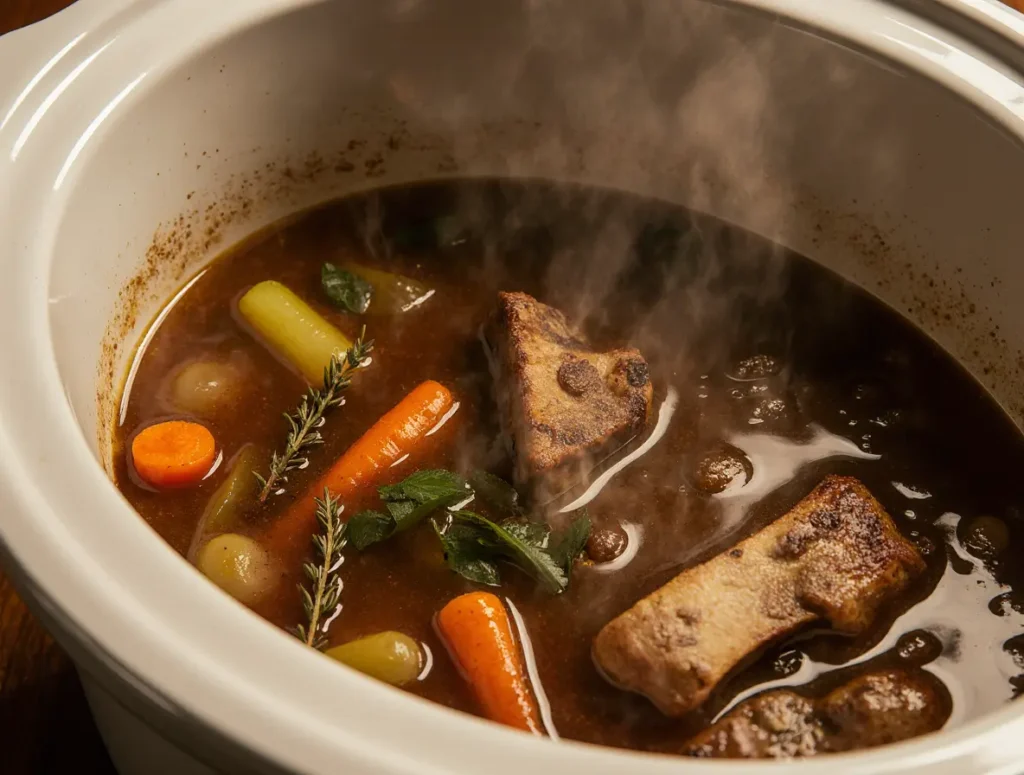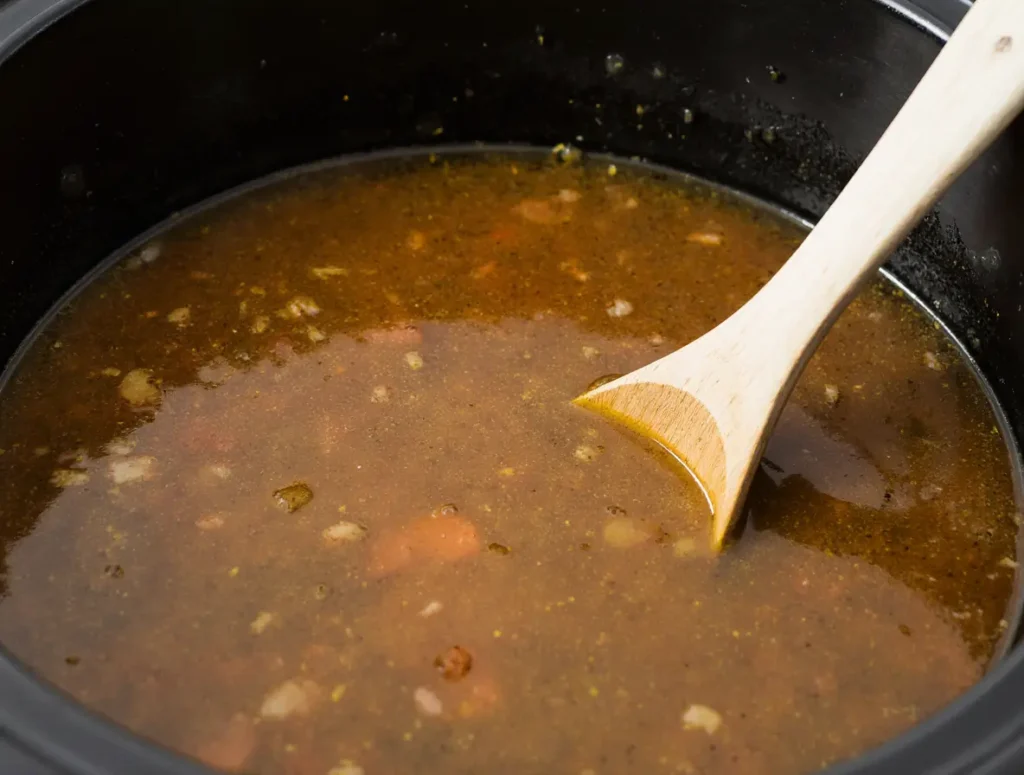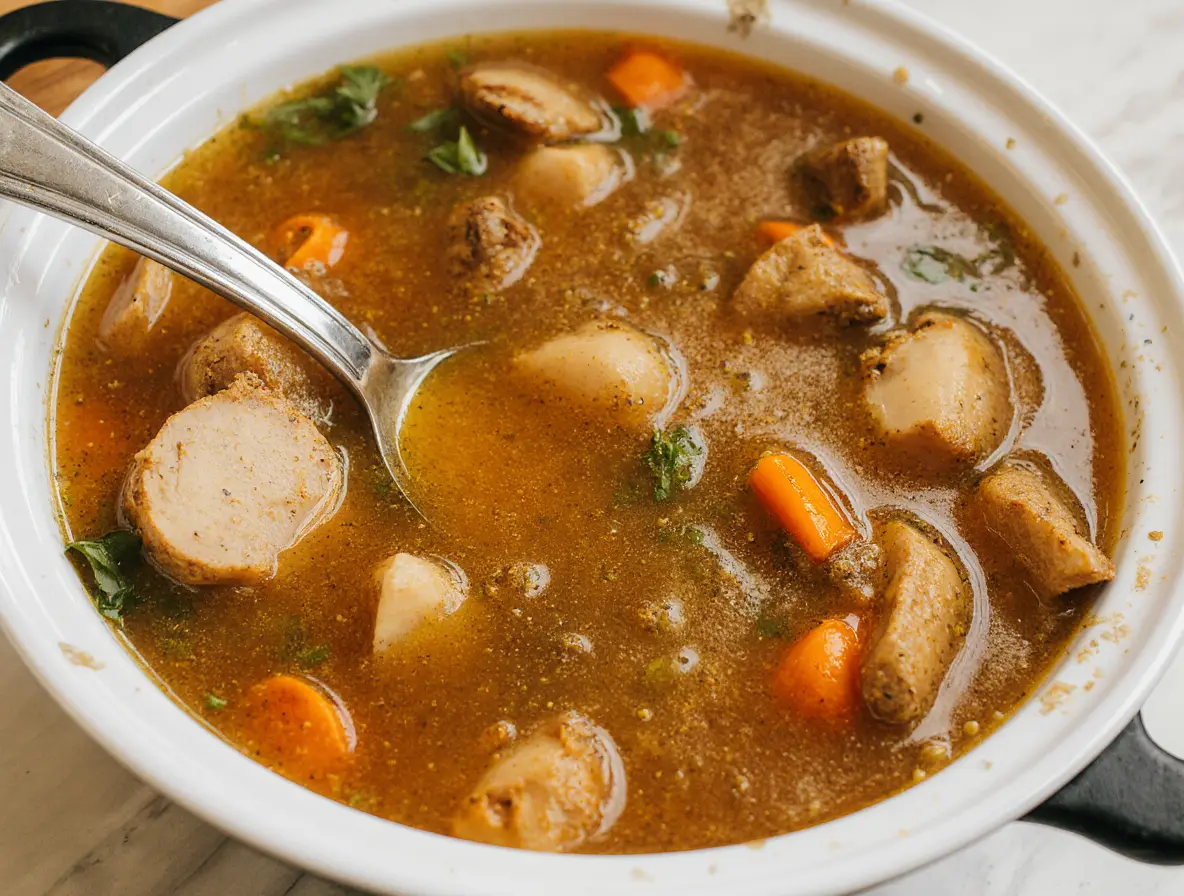Why Slow Cooker Bone Broth Is a Game-Changer
Have you ever wondered why bone broth is suddenly everywhere—from trendy cafes to health blogs? It’s because this humble broth is like liquid gold for your body, packed with nutrients that support everything from digestion to joint health. Now, what if I told you that making bone broth doesn’t have to take all day or turn your kitchen into a mini science lab? That’s where the slow cooker steps in as your best friend.
A slow cooker bone broth recipe lets you tap into all the rich benefits of traditional bone broth with minimal effort. Think of it as a patient artist slowly coaxing every drop of goodness from your ingredients, painting a masterpiece of flavor and nourishment while you go about your day. The slow cooker transforms the complex process of broth-making into something almost effortless, letting time do the heavy lifting.
In this article, we’ll dive into everything you need to know about making the perfect bone broth using your slow cooker. From choosing the right bones to tips on flavoring and storing, get ready to become a broth-making pro with a recipe that fits right into your busy life.
Table of Contents
What Is Bone Broth and Why Should You Care?
Bone broth is more than just a fancy soup base. It’s a nutrient-dense elixir made by simmering animal bones and connective tissues over a long period, typically 12 to 48 hours. This slow simmer releases collagen, amino acids, minerals, and gelatin into the water, turning it into a health-boosting powerhouse.
If you think of your body as a machine, bone broth is like premium fuel—helping repair joints, improve gut health, and even boost your immune system. The collagen acts like the body’s scaffolding, supporting skin, bones, and tendons. Meanwhile, the amino acids work behind the scenes to reduce inflammation and promote healing.
This broth is not just a fad; it’s a cornerstone of many traditional diets around the world. And with a slow cooker, you don’t need to be a culinary expert to reap these benefits.
Why Use a Slow Cooker for Bone Broth?
Using a slow cooker is like having a personal chef who never rushes the process. Traditional stovetop methods require constant attention, stirring, and careful temperature control to avoid boiling too hard and clouding the broth. A slow cooker handles all that for you, maintaining a steady low temperature for hours.
Think of it like a slow-moving river carving out a canyon. The gentle, consistent flow eventually creates something magnificent without harsh disruptions. That’s how a slow cooker extracts nutrients and flavors gradually, resulting in a clear, rich broth with deep complexity.
Plus, it’s incredibly convenient. You can start your broth before bed or when you leave for work and come back to a deliciously ready batch—no babysitting required.
Choosing the Best Bones for Your Slow Cooker Bone Broth
Not all bones are created equal when it comes to broth. For the richest flavor and nutrition, you want a mix of marrow bones, joints, and connective tissue.

- Beef bones: Marrow and knuckle bones are fantastic for collagen and flavor.
- Chicken bones: Carcasses, necks, and feet are packed with gelatin and are budget-friendly.
- Pork bones: Trotters and neck bones add unique taste and nutrients.
Many broth enthusiasts swear by using bones with some meat left on them to add an extra layer of taste. Roasting bones before slow cooking can further deepen the flavor and give the broth a beautiful golden color.
Step-by-Step Bone Broth Recipe Slow Cooker Method
Here’s a simple, foolproof process to make your own bone broth with a slow cooker:
- Prepare the bones: If you want richer flavor, roast the bones in a 400°F oven for 30-40 minutes until browned.
- Load the slow cooker: Place the bones in the pot. Add roughly 1 tablespoon of apple cider vinegar to help draw minerals out. Fill with filtered water until bones are covered but leave some space at the top.
- Add veggies and herbs: Onion, carrots, celery, garlic, bay leaves, and peppercorns make a classic, flavorful base.
- Cook low and slow: Set your slow cooker on low and simmer for 24 to 48 hours. Longer cooking means more nutrients but 24 hours is plenty for most.
- Strain and store: Use a fine mesh sieve to strain the broth. Cool it completely before storing in airtight containers. Refrigerate for up to a week or freeze for months.
Flavoring and Customizing Your Bone Broth
While the basic recipe is nourishing on its own, you can easily customize bone broth to your taste and dietary needs. Adding ginger and turmeric can give your broth anti-inflammatory superpowers. A splash of soy sauce or miso paste can introduce a savory umami boost.
If you prefer a spicier twist, a few chili flakes or fresh herbs like rosemary and thyme can elevate the flavor. The slow cooker is forgiving—feel free to experiment until you find your perfect blend.
Health Benefits Backed by Science
Experts like Dr. Kellyann Petrucci and Dr. Josh Axe praise bone broth for its role in gut repair, joint health, and immune support. Studies show that collagen peptides can improve skin elasticity and reduce joint pain. The gelatin in bone broth also helps strengthen the gut lining, potentially aiding those with digestive issues like leaky gut syndrome.
Bone broth is essentially a whole-food supplement, delivering nutrients in a form that your body can readily absorb. Unlike isolated supplements, it comes with the synergy of natural components working together.
Common Mistakes to Avoid When Making Bone Broth in a Slow Cooker
Even the best slow cooker broth can fall short if you miss a few key points:
- Using too much water dilutes flavor and nutrients—aim for just enough to cover bones.
- Not adding an acid like vinegar means fewer minerals released.
- Cooking on high heat risks cloudy broth and diminished nutrition.
- Forgetting to skim the foam that forms early on can lead to off flavors.
Remember, patience is your ally. The slow cooker method is about gentle, consistent extraction, not rushing the process.
Creative Ways to Use Your Homemade Bone Broth
Bone broth isn’t just for sipping straight from the mug. Use it as a cooking base for soups, stews, risottos, or even to cook grains like rice and quinoa for added nutrition. Adding it to sauces or gravies can deepen flavor without extra calories or sodium.
Some fans replace their morning coffee with warm bone broth for a nourishing start that’s easier on the stomach and full of sustaining protein.
Anecdote: How I Fell in Love with Slow Cooker Bone Broth
I remember my first attempt at homemade bone broth on the stovetop—stirring every hour, worrying about boil-overs, and feeling overwhelmed. When I switched to a slow cooker, it was like night and day. I set it in the morning, went about my day, and came home to the most comforting aroma and rich, golden broth. It felt like a secret weapon for health and happiness in a busy life.
Conclusion: Make Bone Broth Your Kitchen Staple
The slow cooker bone broth recipe is your ticket to effortless, nutrient-packed broth with minimal fuss. It’s a simple ritual that pays huge dividends for your health, skin, digestion, and overall wellbeing. Whether you’re a kitchen novice or seasoned cook, this recipe fits seamlessly into your routine—because good health shouldn’t be complicated.

FAQs
1. How long should I cook bone broth in a slow cooker?
Aim for 24 to 48 hours on low. The longer, the better for nutrient extraction, but 24 hours is sufficient for a rich broth.
2. Can I use leftover bones from meals?
Absolutely! Save bones from roasted chicken, beef, or pork for broth. Just remove excess meat and avoid bones from cooked seafood.
3. Do I need to add vinegar to the broth?
Yes, vinegar helps break down the bones and release minerals like calcium and magnesium into the broth.
4. How do I store bone broth?
Refrigerate in airtight containers for up to one week or freeze for up to six months. Ice cube trays are great for portion control.
5. Is slow cooker bone broth as nutritious as stovetop?
Yes! Slow cooking at low temperatures preserves nutrients while requiring less active attention. It’s often easier to manage than stovetop methods.

